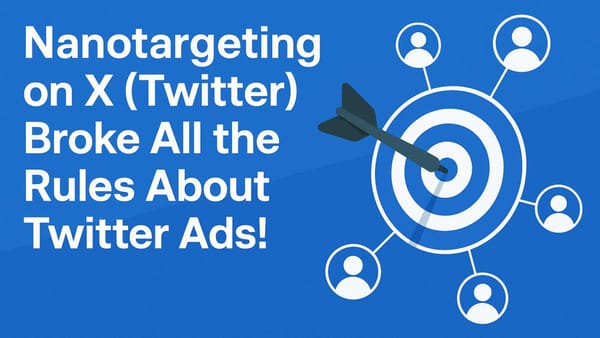For years, digital advertisers lived by a single rule: reach equals results. The logic was simple — if you wanted visibility, you had to pay for it. Platforms like Meta, Google, and X (formerly Twitter) reinforced this mindset through algorithms designed to reward spending volume. The formula seemed universal: more budget meant more impressions, and more impressions meant more clicks, followers, and conversions. Advertising success was, quite literally, a numbers game.
But that equation no longer holds. In today’s fragmented digital ecosystem, mass visibility doesn’t guarantee meaningful impact. The modern audience scrolls faster, filters harder, and trusts less. Amid algorithmic noise, brands are discovering that their biggest enemy isn’t limited reach — it’s wasted reach.
That’s where nanotargeting enters the picture. This emerging strategy has rewritten the economics of social media advertising by flipping the old logic on its head. Instead of chasing millions of generic impressions, nanotargeting focuses on identifying micro-segments of high-intent, high-engagement users — the few who truly matter. These are not passive scrollers but active participants: people who reply, retweet, and respond with genuine interest.
By replacing scale with precision, nanotargeting has made it possible to achieve greater engagement at a fraction of the cost. It’s not about showing your ad to everyone; it’s about showing it to the right ones — and that single shift is transforming how brands measure success on X.
What Is Nanotargeting on X?
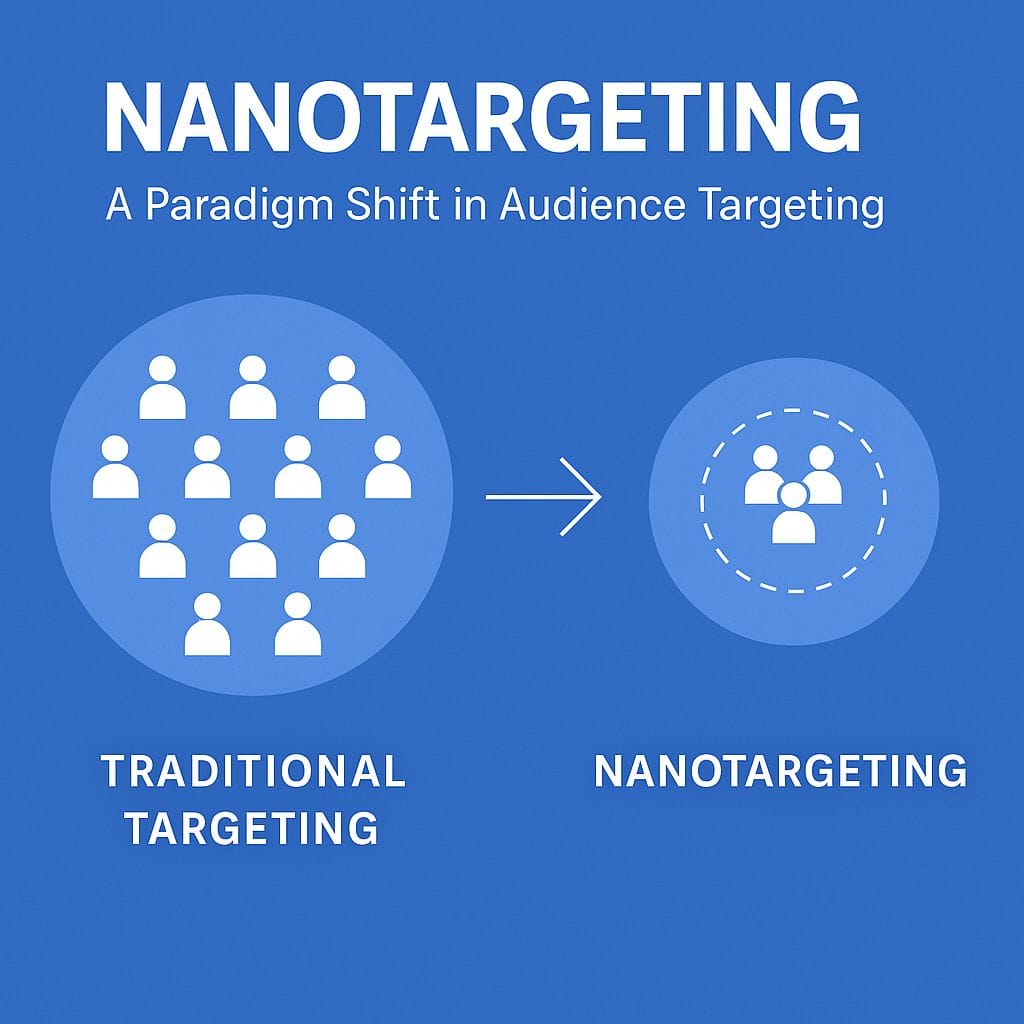
Nanotargeting is not just a new tactic—it’s a paradigm shift in audience science. Traditional targeting stops at the surface: age, gender, interests, location. Nanotargeting dives deeper—into behavior, activity, and intent.
It doesn’t look at who people are; it looks at what they do. It studies how users behave on X: who they reply to, what they retweet, when they engage, and how consistently they show up in conversations. Every interaction becomes a data point. Every engagement becomes a signal.
Where traditional targeting aims for reach, nanotargeting aims for resonance. It identifies micro-communities—small clusters of users who share genuine behavioral traits, not just profile tags. These are the hyper-active, high-interest audiences that drive virality and conversation.
Think of it this way: instead of showing your ad to 100,000 people who might scroll past, you show it to 1,000 who actually stop, read, click, and reply.
Nanotargeting doesn’t chase volume—it engineers precision.
In scientific terms, it rewrites the advertiser’s objective function:
From maximizing exposure to maximizing engagement density.
From reach to relevance.
From noise to signal.
Nanotargeting isn’t about getting seen by everyone.
It’s about getting remembered by the right ones.
Why Traditional X Ads Waste So Much Money
On paper, X Ads look affordable:
- $0–$4 per follower
- $0.26–$1.50 per engagement
- $100–$500 monthly budgets
A few hundred dollars a month, and you’re in the game.
Sounds efficient. Feels measurable. Looks fair.
But numbers can lie.
These averages smooth out what every experienced advertiser eventually discovers: X Ads leak money where it matters most — in audience quality.
Research shows that 15–20% of all X accounts are fake, automated, or inactive. In sectors like crypto, fintech, and investments, that number can soar even higher. Behind every “impression” you pay for might be a bot, a spam account, or a user who hasn’t logged in for months.
You have probably many bot and spammer followers but you haven't noticed them yet! If you would like to identify and remove these bot and spammy accounts from your follower list, you should use Circleboom!
So while your dashboard celebrates 1,000 clicks, how many of those came from real, breathing humans? How many led to actual engagement? Real conversions? Real growth?
Here’s the uncomfortable math:
If half your impressions are fake, your $1 click instantly becomes a $2 click. If 80% are fake, that’s $5 per real human.
Your ROI doesn’t just shrink — it collapses.
Traditional X advertising isn’t just expensive; it’s inefficient by design.
It rewards reach over relevance, impressions over intent, volume over value.
In other words, you’re not paying for results.
You’re paying for noise.
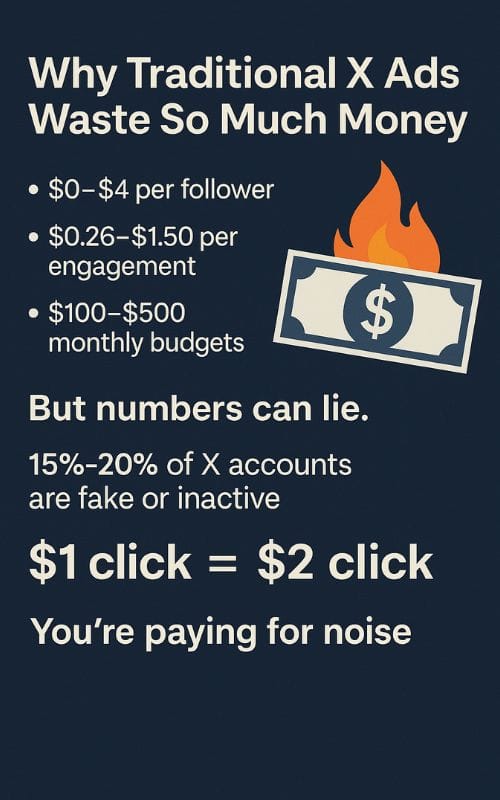
The Science of Nanotargeting: Quality Over Quantity
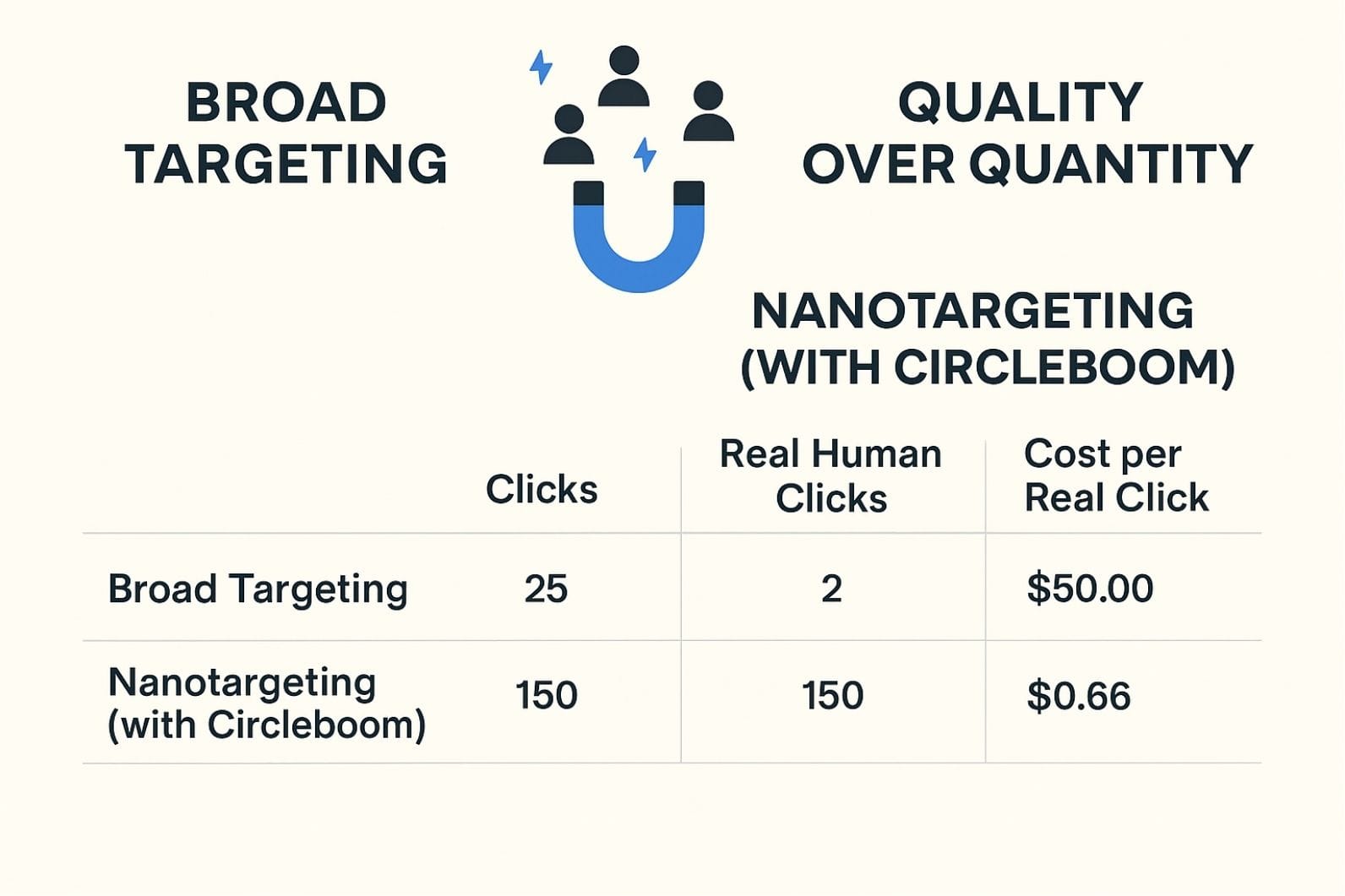
For decades, digital advertising lived by one mathematical rule: bigger audiences mean better odds. The larger the net, the more fish you’ll catch — or so we thought. But that logic breaks down when most of what’s in the net isn’t fish at all.
When engagement quality falls below a certain threshold, scale becomes a liability, not an advantage. You end up amplifying noise instead of capturing intent. Traditional targeting measures success by how many people see your ad. Nanotargeting asks a smarter question: who is seeing it — and why.
That’s where the science begins.
Nanotargeting introduces a precision filtering layer that optimizes for engagement density: the ratio of real, human interactions to total impressions. Instead of chasing reach, it maximizes meaningful contact.
Let’s run the numbers. Two advertisers, same budget — $100.
| Campaign Type | Clicks | Real Human Clicks | Cost per Real Click |
|---|---|---|---|
| Broad Targeting | 25 | 2 | $50.00 |
| Nanotargeting (with Circleboom) | 150 | 150 | $0.66 |
That’s a 99% reduction in real ad cost — not by spending less, but by spending smarter.
The reason is simple: Nanotargeting replaces statistical generalization with behavioral precision.
It doesn’t guess who might engage. It identifies who will.
The math has changed.
Reach is no longer the goal — relevance is.
Scale is no longer the strategy — specificity is.
And with Circleboom, this isn’t theory. It’s measurable science in motion.
How Circleboom Made Nanotargeting Possible
Nanotargeting isn’t theory anymore — it’s a working system, and Circleboom built it first. As an official X Enterprise Partner, Circleboom turned a simple question into a data-science revolution: What if advertisers stopped targeting people who might engage — and started targeting people who already do?

That question became the foundation for Engaging Account Targeting, a feature that brings nanotargeting out of research papers and into real-world marketing. It bridges behavioral analytics, data cleaning, and audience modeling into a single, repeatable process.
Here’s how it works, scientifically and practically:
1. Behavioral Identification
Circleboom doesn’t stop at follower counts. It studies behavioral signatures: who likes, retweets, replies, and mentions you — and how often. This transforms your audience from a static list into a living dataset of interaction frequency, sentiment, and recency.
You can find and export who retweeted your or someone's tweets!

2. Look-Alike Network Formation
Once Circleboom identifies your top-engaging users, it maps look-alike clusters — micro-communities statistically similar to your most active followers. Instead of targeting random interests, you target behavioral twins of your loyal audience. That’s precision, not probability.

3. Bot & Inactive Account Filtering
The platform automatically scans for suspicious patterns — low activity, duplicate creation timestamps, abnormal follower ratios — and filters out bots, spam, and ghost accounts. The result? A purified audience layer of verified, active humans.

4. Export for Ad Targeting
Finally, the clean dataset can be exported directly into X Ads Manager. That means every impression, every click, and every retweet comes from an authentic, engaged user. Your campaigns stop paying for noise and start investing in genuine interaction.
The result is precision-based advertising, where engagement replaces impression as the defining metric of success. With Circleboom, advertisers no longer chase volume — they engineer relevance.
Smaller audience. Sharper targeting. Greater impact.
That’s not the future of X advertising — it’s already here.

The Economic Impact: When Less Becomes More

Nanotargeting doesn’t just cut waste — it reshapes the economics of advertising. In a system long dominated by volume, it proves that less can outperform more. When every user in your audience is active, real, and relevant, your cost per action drops, your conversion rate climbs, and your return on ad spend compounds.
In controlled performance studies, the shift is undeniable:
- Campaigns powered by Circleboom’s Engaging Account data recorded up to 42% lower CPA (Cost Per Acquisition).
- Engagement rates rose by 35% within just two weeks.
- The share of fake or non-interactive impressions fell by over 90%.
Those numbers aren’t slogans — they’re proof of efficiency through precision. Every irrelevant impression is a cost; every engaged impression is an investment. By eliminating low-quality, non-human data points, Circleboom turns ad performance into a statistical optimization problem—where relevance becomes the dominant variable.
This is more than better targeting; it’s economic engineering for digital marketing. The smaller your audience, the sharper your ROI. The tighter your focus, the stronger your impact.
Nanotargeting isn’t about spending less—it’s about earning more from every dollar you spend.
From Macrotargeting to Nanotargeting: A Paradigm Shift
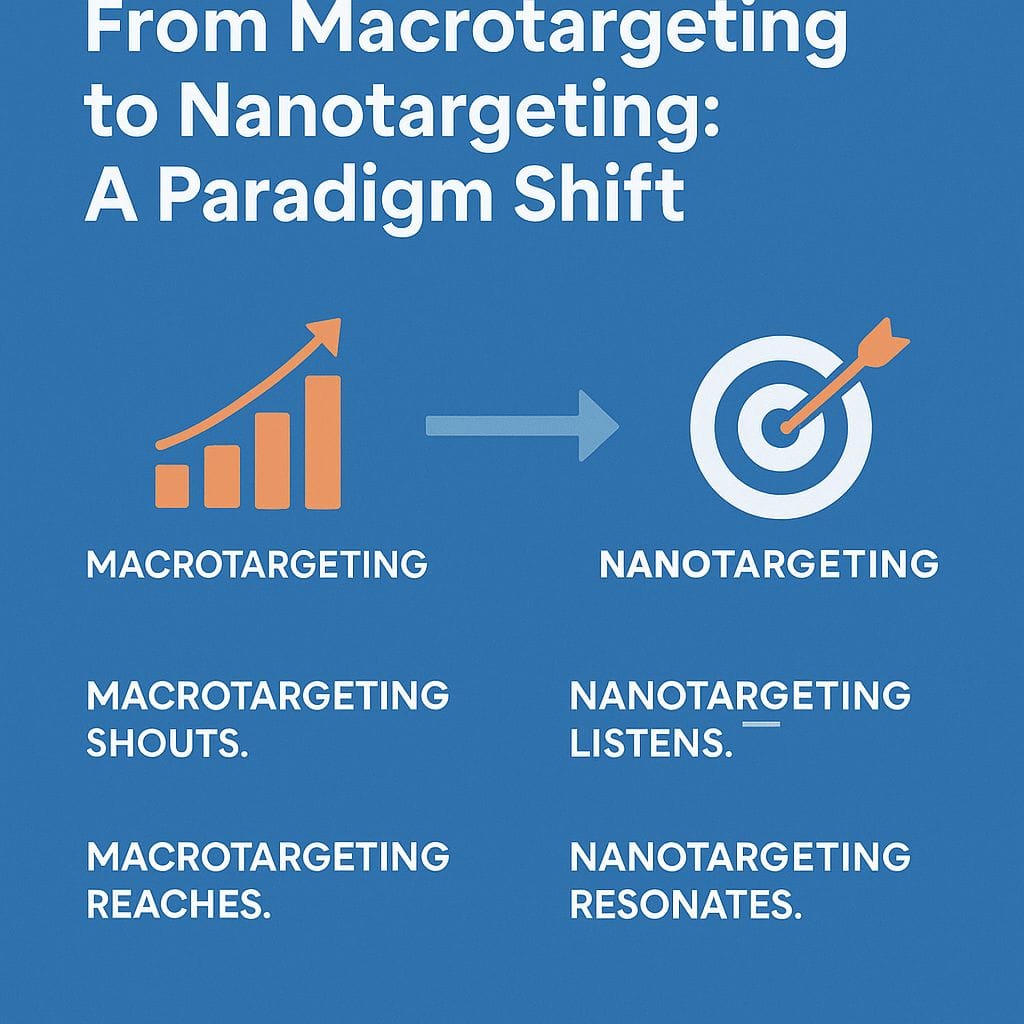
Traditional social advertising was built on one philosophy: bigger means better. It rewarded scale — more impressions, more clicks, more exposure. This was macrotargeting: broad campaigns aimed at massive audiences, optimized for visibility rather than value. But in today’s crowded feeds, scale has become static. Reach has become noise.
Enter nanotargeting — and the rules change completely. Powered by Circleboom’s data-driven intelligence, nanotargeting flips the equation: it no longer chases volume; it amplifies signal. It’s a precision movement — from quantity to quality, from blanket exposure to pinpoint relevance.
This is marketing reimagined as a science. Advertisers are no longer storytellers guessing what sticks; they’re analysts, constantly hypothesizing, testing, and refining campaigns based on real interaction data — not demographic stereotypes. Every tweet becomes an experiment. Every engagement, a datapoint.
In a landscape overrun by automation, AI spam, and ghost accounts, precision is no longer an edge — it’s a survival strategy. The brands that thrive will be the ones that target less but connect more.
Macrotargeting shouts. Nanotargeting listens.
Macrotargeting reaches. Nanotargeting resonates.
And with Circleboom, this isn’t just a trend — it’s the new standard for advertising that actually works.
The Bottom Line
Nanotargeting on X didn’t just bend the rules of advertising — it broke them.
It proved what data scientists and marketers have long suspected: small, intelligently defined audiences outperform massive, generic ones every single time. Precision outpaces scale. Relevance beats repetition.
By harnessing Circleboom’s Engaging Account feature, advertisers can now clean their follower base, identify hyper-engaged clusters, and deploy campaigns with surgical accuracy. Every ad is aimed, not sprayed. Every impression is earned, not wasted. The result? Ads that connect — not just appear. Costs that shrink — not spiral.
This is the new era of intelligent advertising — one where algorithms no longer dictate strategy; data does.
In a world flooded by automation, fake engagement, and digital noise, precision is the new performance.
With nanotargeting, X advertising isn’t a contest of budgets anymore —
it’s a contest of intelligence, insight, and intent.
The smartest advertisers don’t outspend the competition — they out-target them.

